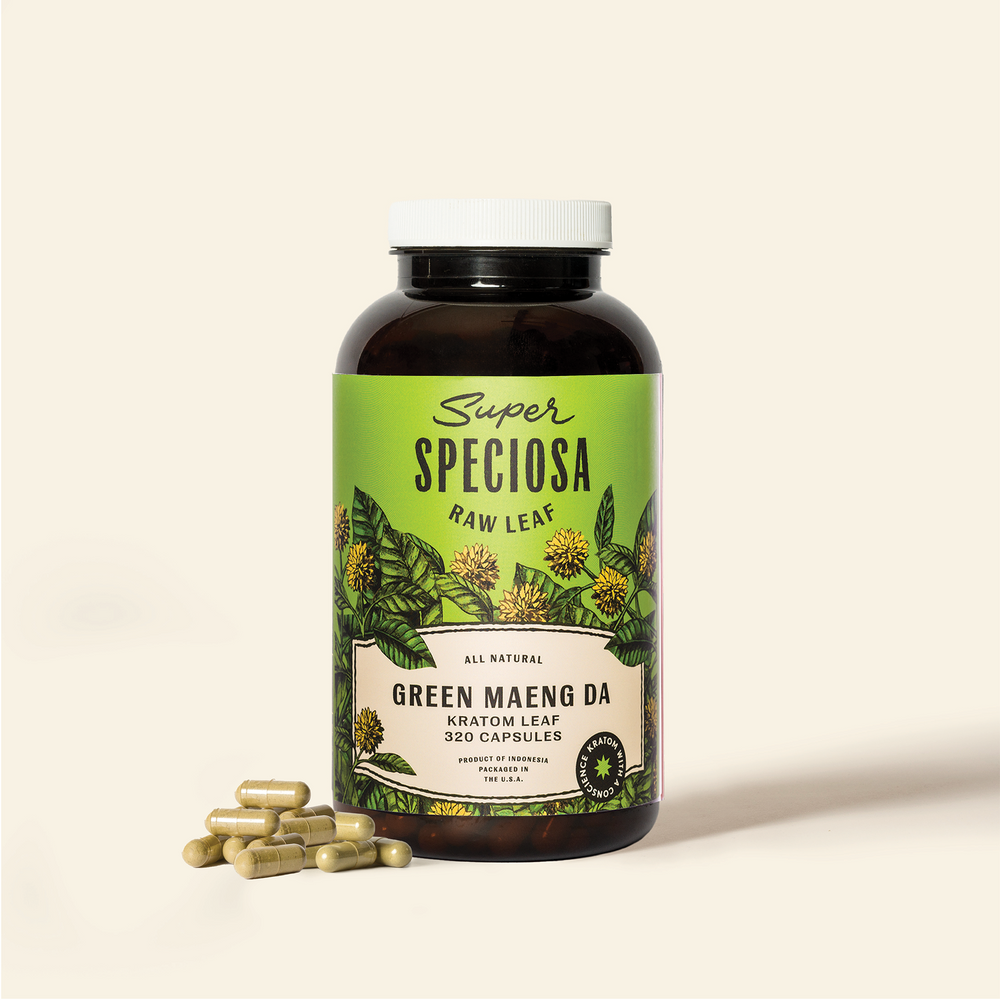Top Researcher Makes the Case for Kratom to Millions on “The Huberman Lab” Podcast
TOP RESEARCHER MAKES THE CASE FOR KRATOM TO MILLIONS ON “THE HUBERMAN LAB” PODCAST

Developments in the science around kratom have shifted the tone in policy around the plant, and now that conversation is leaking beyond the lab and lawmakers and into the world of popular podcasts.
Dr. Christopher McCurdy made a guest appearance on “The Huberman Lab” and made the case for kratom to a show with more than 7 million followers. In a wide-ranging conversation from kratom to caffeine and beyond, McCurdy laid out an in-depth analysis of the current science on kratom and what it means for an emerging American market for the plant-based supplement.
The podcast is hosted by Andrew Huberman, a professor of neurobiology and ophthalmology at Stanford, who branched out to podcasting in 2021 after making appearances on other notable podcasts, including The Joe Rogan Experience. A majority of episodes center on science and the brain, but some venture into topics such as nutrition, physical wellness and even discussions of spirituality and faith.
Due to kratom’s growth and the issues surrounding the expansion of the kratom market, McCurdy’s appearance on the show was aimed at establishing not only the profile of natural kratom products, but also taking a look at products derived from kratom that Huberman said have “unfortunately confused and, in many cases, harmed consumers.”
Why Kratom Needs Regulation
That is where the conversation with McCurdy began. Using the experience he has gained both researching kratom in the United States at the University of Florida, as well as his travels to study kratom where it is grown (Southeast Asia), McCurdy was clear that different levels of processing are the biggest indicator of the safety and efficacy of any kratom product.
“In the United States and in the Western world, it’s a very different product from day one. It’s a dried leaf material that has been exposed to the air, to the sun…plus, shipping it all the way across the world from Indonesia.”
McCurdy said that because of those differences, it is hard to compare kratom drinks in Southeast Asia with the products readily available in American markets. Still, products derived from natural kratom leaf share similarities to the drinks that have been traditionally associated with the plant, in large part due to how the body metabolizes and breaks down the different alkaloids.
“It’s an interesting product because (natural leaf is) as close to the traditional use as you can get in the Western world. You’re still using the leaf, and you’re ingesting it or making a tea from it,” McCurdy said.
Because the products are still derived from the natural leaf source, McCurdy explained that it requires more energy for the body to break down the alkaloids, thereby limiting the intensity of the effects experienced by the consumer. As the kratom product becomes more processed, the body is not required to expend as much energy breaking down the material, which means the effect can be more immediate and more intense.
That’s why McCurdy has been part of a group of researchers who have pushed for a set of laws more colloquially known as Kratom Consumer Protection Acts (KCPAs).
How Kratom Should Be Regulated
Among the regulations typically associated with KCPAs are clear labels and dosage instructions, a limit on synthetic or semi-synthetic alkaloids and age restrictions for kratom consumers. McCurdy spoke with Huberman about the many uses and potential of kratom, but also said that these types of regulations and label requirements are important to let consumers make their own choices and to protect younger, vulnerable minds from the effects of highly concentrated products.
“They had kratom energy shots right next to the Five Hour Energy shots. If you weren’t paying attention, you might accidentally grab something that you thought was a Five Hour Energy shot,” McCurdy said. “Generally, what we worry about is kids getting these and taking a whole bottle.”
McCurdy also spoke about the growing market for kratom and how consumers self-identified in terms of how and why they use kratom. Although studies and research indicate that there are around 2 million kratom users in the United States, the volume of products indicates to McCurdy that the number could be as high as 20 million.
More importantly, McCurdy suggested that the growth in the market size is due to the value of kratom as a supplement, rather than the ‘substance of abuse’ that many in law enforcement and government have claimed.
“What we’ve found in the largest study that we’ve done to date, is that most users are using it in a very responsible and directed way, where they’re not using it to get this high or this euphoria or sedative feel,” McCurdy said.
Those responsible kratom users, and the companies that produce responsible products made from natural kratom leaf, are why McCurdy has advocated for a regulated market for the plant, rather than wide-ranging restrictions. However, that all changes once the product has been heavily processed or modified to isolate specific alkaloids.
Recently, the market has seen a spike in products with artificially enhanced levels of 7-hydroxymitragynine (7-OH), something that McCurdy said follows a dangerous trend with a variety of natural products.
“Natural products have evolved in Mother Nature’s kitchen for millennia–they’ve been there for thousands of years. It only took humans coming along to figure out how to manipulate those and mess it up,” McCurdy said. “Mother Nature has got it right in many cases.”
Due to his research, McCurdy made it clear to Huberman and the audience that 7-OH is not kratom and should be classified in a different category from natural-leaf kratom products. Although McCurdy’s studies center on animal-based observations, he said there was enough evidence to show that products with enhanced 7-OH should be treated with extreme caution.
“We know that this 7-hydroxymitragynine, this metabolite that our bodies produce naturally from the major alkaloid, is being chemically produced and sold now in commerce,” McCurdy said. “We know that that molecule is pure opioid in its activity. It only interacts with opioid receptors.”





